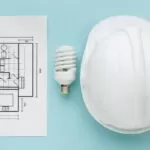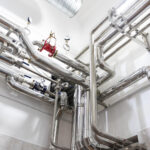In the heart of the Lone Star State, building owners are increasingly recognizing the importance of embracing sustainable practices. As the global shift towards renewable energy gains momentum, Texas is no exception. Renewable Energy Integration is a crucial aspect of sustainable development, and building owners play a pivotal role in fostering this transition. In this article, we explore the three best ways MEP (Mechanical, Electrical, and Plumbing) engineers facilitate Renewable Energy Integration, offering practical insights tailored for business owners in Texas.
Table of Contents
1. Understanding the Landscape
Texas, known for its vast landscapes and diverse industries, presents unique challenges and opportunities for building owners seeking to do renewable energy integrations as solutions. From sprawling urban complexes to rural facilities, each structure requires a tailored approach to meet its energy needs sustainably.
The Power of Solar Integration
In the sun-drenched expanses of Texas, solar energy emerges as a potent solution for building owners aiming to harness renewable power. Solar panels, strategically placed on rooftops or open areas surrounding the building, absorb sunlight and convert it into electricity. This approach not only reduces dependence on traditional grid systems but also presents an opportunity for businesses to capitalize on solar incentives and tax credits.
By partnering with MEP engineers experienced in solar integration, building owners can ensure optimal placement and efficiency of solar panels. These experts analyze the building’s energy consumption patterns, local weather conditions, and solar exposure to design a system that maximizes energy production. As a result, building owners can significantly lower their electricity bills while contributing to a greener and more sustainable Texas.
Wind Energy: A Viable Option
Texas stands out as a wind energy leader, with vast wind farms dotting its landscape. Building owners can tap into this sustainable resource by incorporating wind turbines into their energy strategy. MEP engineers specializing in wind energy integration can assess the wind potential at a specific location and design a system that harnesses this energy efficiently.
Wind turbines, strategically positioned on rooftops or adjacent land, generate electricity as the wind turns their blades. This green energy source not only reduces the building’s carbon footprint but also positions the owner as a contributor to Texas’ renewable energy goals. With advancements in turbine technology, even buildings in urban areas can benefit from wind energy integration, making it a versatile option for a wide range of structures.
2. Energy-Efficient Building Designs
Beyond renewable energy sources, MEP engineers play a crucial role in designing energy-efficient building systems. This approach involves optimizing the building’s infrastructure to minimize energy consumption without compromising functionality or comfort.
Smart HVAC Systems
Heating, ventilation, and air conditioning (HVAC) systems are integral to any building’s energy profile. MEP engineers leverage cutting-edge technology to design smart HVAC systems that adapt to real-time conditions. These systems incorporate sensors, programmable thermostats, and energy-efficient components to ensure optimal temperature control while minimizing energy usage.
By investing in a smart HVAC system, building owners in Texas can achieve significant energy savings, especially during the scorching summer months. Additionally, these systems contribute to a more sustainable future by reducing the overall demand for electricity from conventional sources.
LED Lighting Solutions
Lighting represents a substantial portion of a building’s energy consumption. MEP engineers recommend the integration of LED lighting solutions as a simple yet effective measure to enhance energy efficiency. LED lights consume significantly less energy than traditional incandescent bulbs and have a longer lifespan, reducing maintenance costs for building owners.
Moreover, MEP experts can design lighting systems that utilize natural light whenever possible, incorporating features such as skylights or strategically placed windows. This not only lowers electricity usage but also creates a well-lit and inviting environment for occupants.

3. Storage Solutions for Renewable Energy
As renewable energy sources are intermittent, effective storage solutions are essential to ensure a continuous and reliable power supply. MEP engineers in Texas are at the forefront of developing storage systems that complement renewable energy integration.
Advanced Battery Technologies
Leveraging advancements in battery technologies, MEP engineers design storage solutions capable of storing excess energy generated during peak production periods. These batteries can then release stored energy during periods of low production, ensuring a steady power supply regardless of external conditions.
For building owners, this means increased reliability and resilience in the face of power outages or fluctuations. Additionally, the integration of advanced battery technologies contributes to the overall stability of the grid, aligning with Texas’ commitment to a robust and sustainable energy infrastructure.
Grid Connectivity and Demand Response
MEP engineers also focus on enhancing a building’s connectivity to the grid and implementing demand response strategies. By establishing a seamless connection to the grid, buildings can exchange surplus energy with the broader network, further contributing to the state’s renewable energy goals.
Demand response involves adjusting energy usage based on grid conditions and availability of renewable energy. MEP experts design systems that can intelligently respond to grid signals, optimizing energy consumption during periods of high renewable energy availability and reducing demand during peak periods.
Conclusion
In the vast expanse of Texas, building owners have a unique opportunity to lead the charge in Renewable Energy Integration. By partnering with MEP engineers, these owners can harness the power of solar and wind energy, optimize building designs for energy efficiency, and implement cutting-edge storage solutions. As the state continues to prioritize sustainable practices, building owners in Texas can play a pivotal role in shaping a greener and more resilient future. Embracing renewable energy integration is not just an investment in the bottom line; it is a commitment to the well-being of Texas and the planet.




